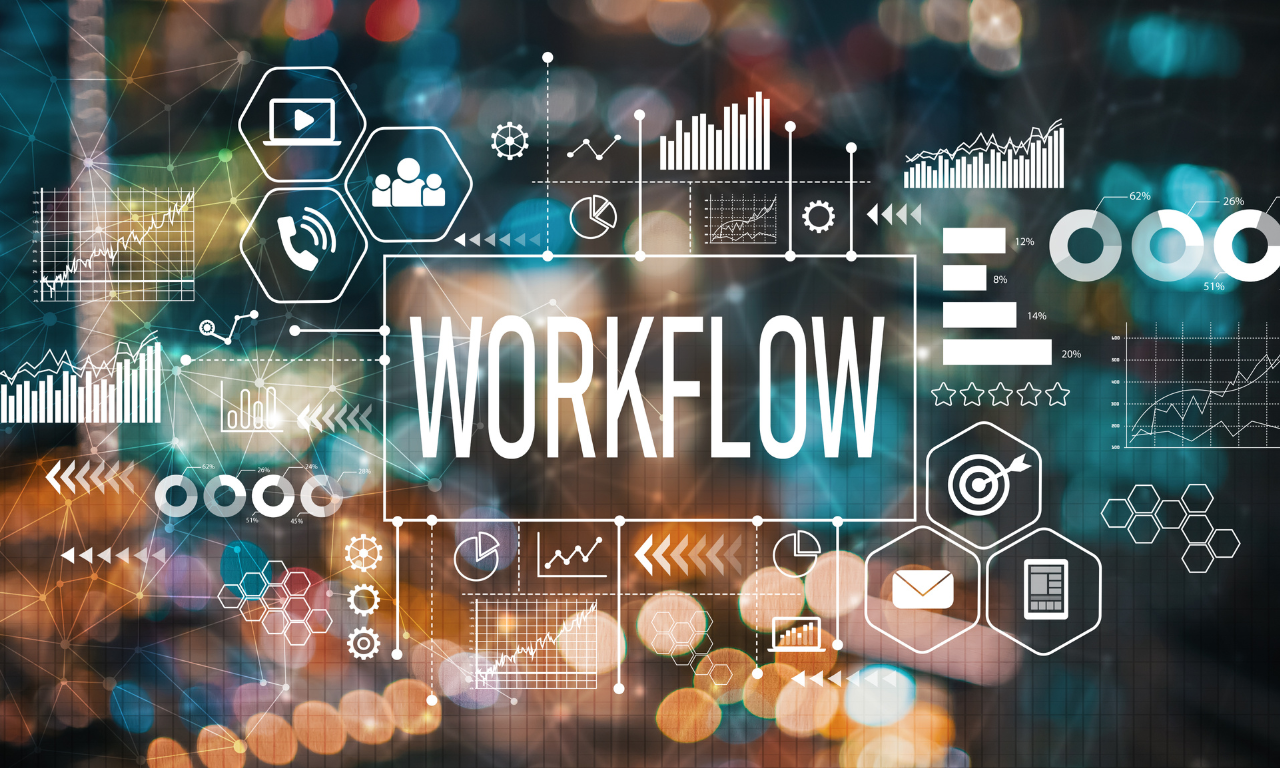Agentic AI Workflows: Core Elements Examples & Benefits

Have you ever wished your workflow could think on its own?
What if it didn’t just follow instructions but actually made decisions, adapted to changes in real time, and got smarter with every task?
Gartner predicts that by 2028, a third of enterprise workflows will run on agentic AI, up from barely 1% today. Why the rush?
For years, businesses have relied on traditional workflows - set rules, rigid systems, and constant manual oversight. But we all know the pain! It’s time-consuming, inefficient, and frankly, frustrating.
Agentic AI workflows help in changing that!
Unlike traditional workflows, these systems don’t just follow pre-set rules; they think, adapt, and learn as they go. They can make decisions in real-time, reroute tasks, handle exceptions, and continuously improve without needing your constant input.
This is just like having a team that works 24/7, adjusting to changes and getting smarter every day.
In this blog, let’s learn how these workflows work and how you can start using them without disrupting what’s already working for you.
How agentic AI workflows actually function in the real world?
An Agentic AI workflow does more than just automate tasks, as it replicates how high-performing teams operate. It plans, executes, adjusts, and improves without micromanagement or rigid rules.
You provide the goal. The system figures out the rest. Let’s understand with a real-world example.
Imagine you’re launching a marketing campaign for a new feature release - say, an AI-powered analytics dashboard. Instead of writing a detailed project brief or manually assigning tasks, you give a single, high-level instruction:
“Plan and execute a product launch campaign.”
This is where the agentic AI workflow kicks in.
Step 1: Defining the goal
The process begins with a goal-driven AI agent that you can think of as your campaign strategist. The agent interprets the high-level objective and begins by identifying the necessary elements:
-
Who’s the target audience?
-
Which channels make sense?
-
What’s the timeline?
-
What does success look like?
It doesn’t stop at basic planning. The agent scans your CRM, pulls insights from previous launches, and even factors in current market trends to shape a custom strategy.
Step 2: Breaking down and assigning tasks
Once the plan is outlined, the agent orchestrates execution. Through intelligent task orchestration, it delegates work to specialised agents:
-
A content agent drafts messaging for email, ads, and landing pages
-
A design agent begins developing visuals for each channel
-
A research agent analyses competitor positioning and benchmarks
These agents work independently but stay synced, sharing data, outputs, and context in real time. This is multi-agent collaboration in practice, where tasks are distributed but aligned under one shared goal.
Step 3: Adapting as the campaign evolves
Let’s say halfway through the campaign prep, the research agent identifies that your audience is engaging more with short-form video than static ads.
Without manual intervention, the system responds:
-
The content agent rewrites copy for video scripts
-
A video editing agent is activated
-
Design resources are redirected from banners to thumbnails and motion graphics
This is adaptive task delegation at work. Agents reprioritise, redistribute, and rethink the approach based on live data.
Step 4: Planning and replanning on the fly
Things don’t always go as expected. Maybe a competitor drops a similar feature a week before your launch.
Through dynamic workflow planning, the agents respond:
-
Adjusting timelines
-
Rewriting messaging for differentiation
-
Doubling down on a different channel strategy
Just like a human team would, but faster and without getting stuck in meetings.
Step 5: Staying context-aware from start to finish
Throughout the process, every agent pulls from a context-aware workflow system. This means they’re not operating in a vacuum. They adapt their decisions based on:
-
Market conditions
-
Real-time campaign performance
-
Internal changes like updated branding or shifting KPIs
The campaign remains in sync with the world outside the workflow.
Step 6: Delivering the outcome autonomously
Finally, the campaign goes live across email, social, and paid channels. Performance is monitored. Reports are generated. Insights are stored for next time.
All of it executed through AI workflow automation, but with agents acting independently, collaboratively, and intelligently.
3 Core Elements that make Agentic AI Workflows Possible
Agentic AI systems are designed to think, adapt, and coordinate, not just to enhance automation. Three essential components make all of this possible.
Each one plays a specific role in enabling autonomous workflow execution, keeping agents aligned, and ensuring the system gets smarter over time.
Here’s a breakdown of the core building blocks:
| Component | What it does | Why it matters |
|---|---|---|
| Autonomous agents | These are the brains of the system—goal-driven AI agents with specific roles and clear objectives. They independently assess situations and take action. | Agents don’t need hand-holding. They self-direct, collaborate through multi-agent collaboration, and stay aware of the wider system at all times. |
| Data flow management | Manages how data moves between agents. Ensures real-time sharing, context preservation, and synchronisation across tasks and goals. | Keeps every decision-making agent updated with the right information. This ensures that actions occur at the right time, preventing outdated inputs and disconnected workflows. |
| Feedback + optimisation | Introduces continuous learning. Monitors performance, reallocates tasks using adaptive task delegation, and builds real-time feedback loops for improvement. | Drives long-term efficiency. Dynamic workflow planning and historical insight enable the system to evolve, adapt, and make smarter decisions over time. |
Operational Advantages to Expect from Agentic Systems
For leadership teams, the question isn’t what the tech can do. It’s what changes in the business when it's deployed.
The value of an agentic AI workflow shows up fast in reduced overhead, faster operations, and systems that scale without added complexity.
Here’s what that impact looks like when translated into business outcomes:
| Business Area | Real-world Impact |
|---|---|
| Operational Efficiency | Fewer layers of management. With autonomous workflow execution, teams spend less time coordinating and more time on strategic work. |
| Cost Reduction | Smaller teams can do more. Less manual oversight, fewer task dependencies, and fewer context switches lower operating costs. |
| Speed to Market | Campaigns, product updates, and internal rollouts move faster through intelligent task orchestration, reducing delays and missed windows. |
| Scalability without Drag | As workloads grow, output stays consistent. Multi-agent collaboration ensures no drop in quality, regardless of scale or complexity. |
| Agility under Pressure | With context-aware workflow systems, processes adapt instantly to changes, be it in customer demand, internal priorities, or external disruptions. |
Agentic AI Workflow Examples Which are Solving Problems
Agentic AI workflows aren’t just theory – they’re already solving tough, real-world problems. Across industries, businesses are using these systems to handle complexity, reduce manual effort, and respond faster to change.
Here are three standout examples:
1. Healthcare: Automating patient care decisions
In healthcare, context-aware workflow systems are quietly transforming how care gets delivered.
Behind the scenes, goal-driven AI agents perform essential tasks such as sorting patient records, cross-checking symptoms with clinical guidelines, and recommending next steps. These aren’t rigid bots – they factor in real-world constraints, like available specialists or appointment wait times.
Tasks like medication reminders, appointment follow-ups, and test scheduling are all managed through AI workflow automation, freeing up doctors for more complex cases. Many hospitals using intelligent task orchestration have increased patient throughput by 20%, without needing additional staff.
Read our guide to explore how agentic AI is changing the healthcare industry
2. Finance: Fraud detection and automated trading
Fraud doesn’t follow rules, so traditional systems miss a lot. That’s why banks are turning to agentic AI workflows.
Through multi-agent collaboration, each decision-making agent monitors a different data point: one checks location and device ID, another reviews historical spend, and nother watches login behaviour. Together, they detect suspicious activity in real time and act on it.
Thanks to autonomous workflow execution, the system doesn’t just raise an alert. It blocks transactions, notifies the customer, and escalates the issue internally – all within seconds. Institutions using this approach have reduced false positives by up to 35% while improving response time by 60%.
3. Manufacturing: Real-time production optimisation
On a busy factory floor, even a small delay can cause a ripple effect. This is where agentic AI workflow setups shine. Let’s say a supplier shipment is delayed. A goal-driven AI agent notices the gap in inventory.
It triggers a chain of responses, like one agent checks alternative suppliers, another adjusts the production schedule, and a third reroutes downstream logistics.
All of this happens using dynamic workflow planning and adaptive task delegation.
Check out how agentic AI is changing manufacturing in the retail space
What Makes Building Agentic Systems Hard and How to Get it Right?
Designing an agentic AI workflow is about building smart systems. It’s about making them work in real environments with all the messiness that comes with legacy tech, unpredictable behaviour, and human accountability.
Here are some of the biggest challenges teams face (and how to start solving them):
1. Integration with existing systems
Let’s face it, most legacy platforms weren’t built with autonomous workflow execution in mind. Trying to plug in goal-driven AI agents often feels like forcing modern logic into an outdated system.
From incompatible data formats to rigid security frameworks, these blockers slow down implementation and inflate costs.
To solve this, you can introduce context-aware workflow systems gradually. Start by wrapping agents around isolated processes before scaling them across your tech stack. This limits disruption while proving value early.
Learn how to build and deploy AI agents for smoother system integration.
2. Managing complexity and scalability
As you add more agents, multi-agent collaboration becomes harder to track. What starts as a clean system can turn into a tangle of overlapping decisions, conflicting triggers, and unpredictable behaviour.
One small change in task logic can ripple through the system in unexpected ways.
For this, build with agent-based process modelling from day one. Map how agents should interact, where dependencies lie, and how adaptive task delegation should be handled when the system scales.
3. Ensuring trust and accountability
Giving decision-making agents real authority means they’ll eventually influence critical outcomes. That’s powerful, but it also raises serious questions:
Who’s responsible if something goes wrong? Can we trace why a decision was made?
Blind trust won’t cut it.
To prevent this, design with explainability in mind. Use transparent logic, clear escalation paths, and make sure agents log every decision. You need just enough oversight to stay compliant – without undermining the autonomy that makes AI workflow automation valuable in the first place.
How to Know if Your Workflow is a Good Fit for Agentic AI?
Not every workflow needs goal-driven AI agents, but some absolutely do.
Agentic AI workflows thrive in processes that span across teams, undergo constant shifts, or collapse when coordination becomes chaotic. These systems aren't built for simple rule-following. They’re meant for work that demands flexibility, judgement, and real-time response.
If your workflow involves frequent changes, many moving parts, and multiple stakeholders, you’re in ideal territory for agent-based process modelling and intelligent task orchestration.
If it's fixed, predictable, and siloed, traditional automation is still the right fit. Explore the various types of AI agents that power such workflows.
Conclusion: Leveraging Agentic AI Workflows for your Business
Agentic AI turns static task lists into living workflows that plan, pivot, and perfect themselves. Done right, the payoff is clear: fewer hand-offs, quicker launches, and teams freed to chase bigger ideas.
Done badly, you inherit a swarm of chatty bots and a fresh layer of chaos. The difference lies in smart process modelling, crisp guardrails, and tools that mesh with your current stack. That’s where GrowthJockey steps in.
We map your workstreams, match them to the right agent mix, and tune orchestration so value shows up in weeks, not quarters. With our tailored AI solutions, you build once, learn fast, and let your workflows run as intelligently as the people who designed them.
FAQs on Agentic AI Workflows
1. What is an agentic AI workflow?
It is a series of tasks run by goal-driven AI agents that sense data, decide the next best action, and execute without waiting for human prompts - learning from every cycle so the workflow keeps improving.
2. How is agentic AI different from traditional RPA?
RPA follows fixed rules; agentic AI monitors live context, revises plans on the fly, and hands edge cases to humans only when needed, cutting delays by 30-50%.
3. Which business processes gain the most from agentic AI?
High-coordination, fast-changing workflows, marketing launches, supply-chain rerouting, fraud checks, and multi-step customer onboarding - see the quickest ROI.
4. Do agentic workflows still need human oversight?
Yes. Teams set goals, review edge-case escalations, and audit decision logs, ensuring compliance and ethical guardrails while the agents handle the routine lift.








